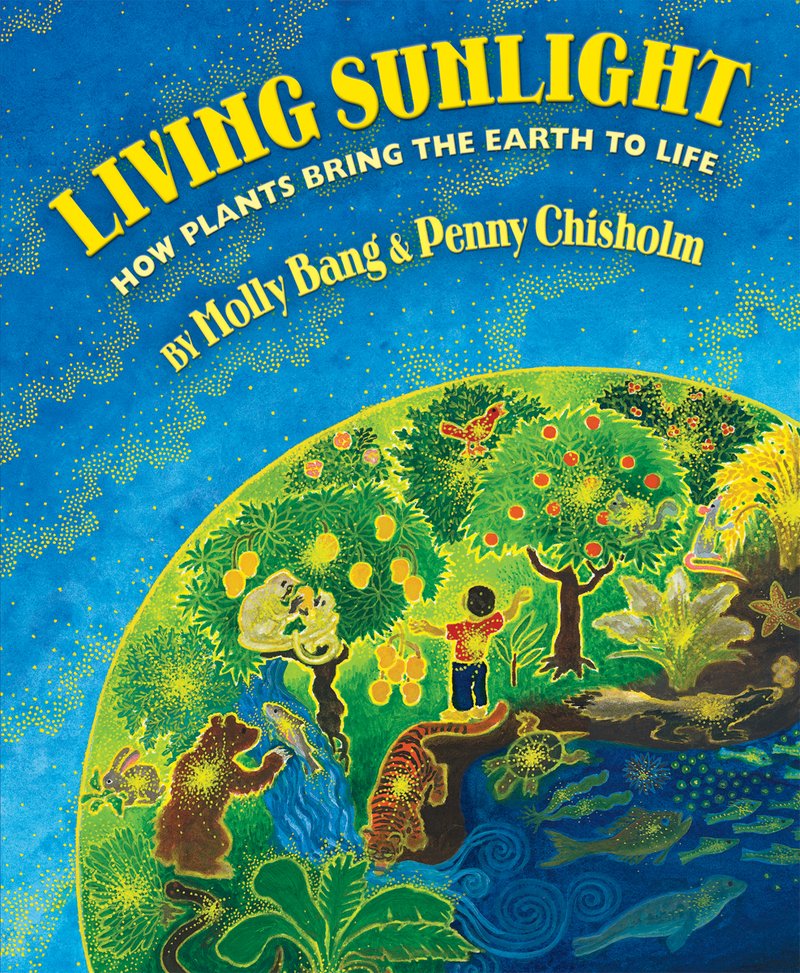 Living Sunlight
Living Sunlight
How Plants Bring the Earth to Life
by Molly Bang and Penny Chisholm
Scholastic Books, 2009
ISBN-13: 978-0-545-04422-6 (hc)
$18.99, 32 pp, ages 8 – 11
www.scholastic.com
This is a book about life—about how life works. It is a book about how our sun gives us life through photosynthesis, the most important process on Earth. It is also a book about how photosynthesis connects all life—how all life shares the same atoms, and how these atoms cycle on our planet.
This quote, taken from the notes at the back, correctly describes the content and purpose of the book, but you really do need to take a closer look to appreciate Living Sunlight’s full potential as a classroom resource. To begin with, the illustrations are intriguing in their composition. The intense colours and complex detail command your attention, while at the same time they are making the chemical reactions involved in photosynthesis understandable to even the youngest of readers. The narrator (the sun) speaks to the reader in scientifically accurate, but kid-friendly language: Listen to me. Do this one thing: Lay your hand over your heart, and feel. Feel your heart pump, pump and pump. Feel how warm you are. That is my light, alive inside of you. I am your sun, your golden star. I burn. My light energy explodes in all directions. Most fades into endless space. But some tiny, tiny part of my light falls on your small planet Earth.
Finally, the notes at the back of the book provide the teacher, or older readers, with additional information that was omitted from the book in order to simplify the story.
Classroom Connections: I have enjoyed using this book with Grades 3 to 6. The Science connection makes it an easy fit to the curriculum but it is also a great book for teaching Questioning and Inferring as effective reading strategies. Posing an open-ended question (e.g., How do you share life with every other living thing on our planet?) before and after the reading of the book might also reveal some shifts in the students’ thinking (I thought… but now I think…).
Review by Brenda Boreham.
This review is from Canadian Teacher Magazine’s Mar/Apr 2012 issue.












